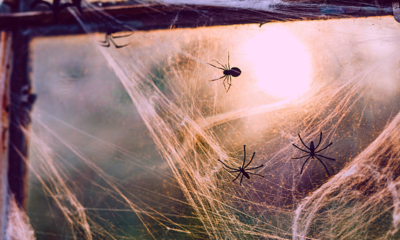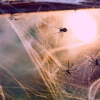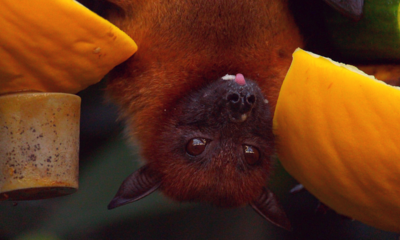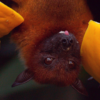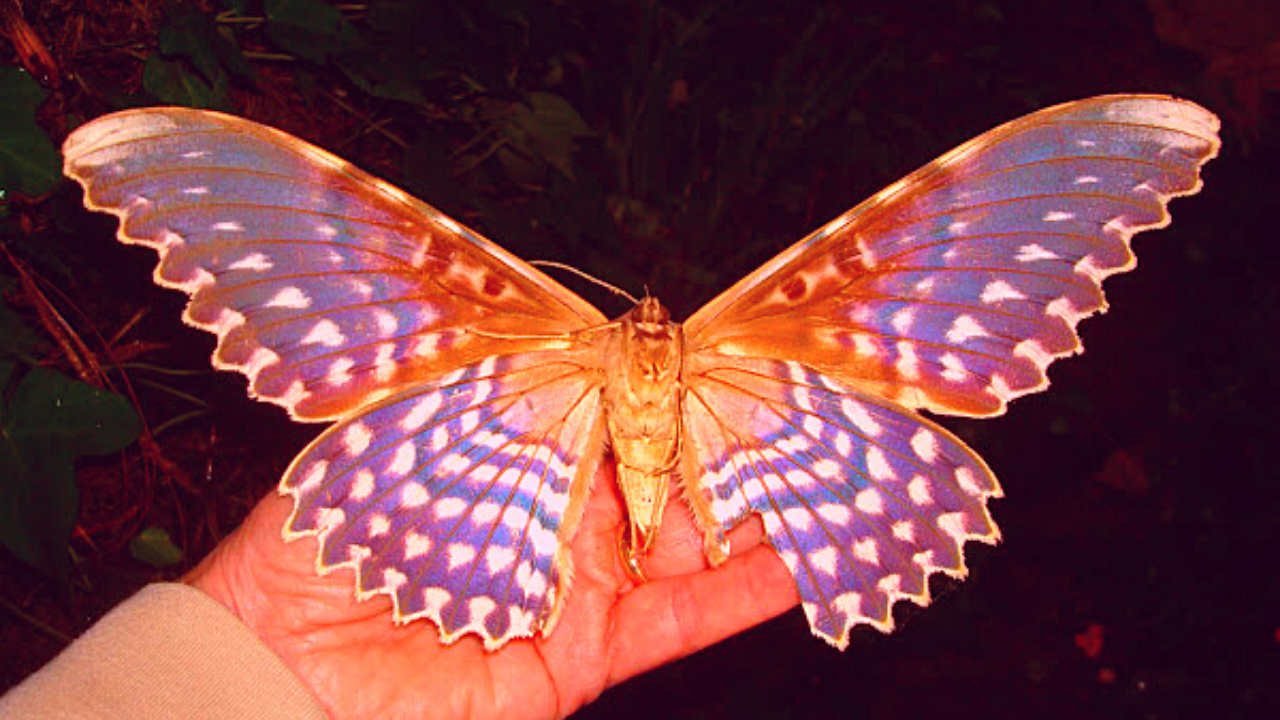
Animals
10 Biggest Moths In The World
According to Britannica, moths and butterflies are insects which together form the order called Lepidoptera, meaning ‘scaly-winged.’
The patterns and colours of their wings are formed by thousands of tiny scales, overlapping like tiles on a roof. These can easily be dislodged as a powdery dust, so it’s best not to touch their wings.
Moths vary greatly in size, ranging in wingspan from about 4 mm (0.16 inch) to nearly 30 cm (about 1 foot). Highly adapted, they live in all but polar habitats.
Are Moths and Butterflies Different?
Moths and butterflies both belong to the same insect family – Lepidoptera, but they have a few differences between them which sets them apart from one another.
On the behavioral side, moths are nocturnal and butterflies are diurnal (active during the day). While at rest, butterflies usually fold their wings back, while moths flatten their wings against their bodies or spread them out in a “jet plane” position.
Did You Know?
Although many people overlook them, moths are widespread, with over 2,500 species in Britain living in a wide range of habitats. They are a major part of our biodiversity and play vital roles in the ecosystem, affecting many other types of wildlife.
10. Ascalapha Odorata/ Bat Moth/ Black Witch
Wing Span: 17 cm
Life Span: 3-4 weeks
Habitat: United States
The Black Witch (Ascalapha odorata) is the largest moth, if not the largest insect, north of Mexico. It is very common across Texas following the start of the rainy season in Mexico each June. It is often mistaken for a bat which it somewhat resembles.
The Bat Moth has a wing span up to 7 inches. The females are slightly larger and lighter than males and have a pale median band through their wings.
Ascalapha odorata goes by many names like the bat moth, black witch, La Sorcière Noire (French) and Mariposa de la Muerte (Spanish). Reports of large, bat-like moths surprising people, frequently as they return home and are unlocking their front door, are not uncommon.
The folklore surrounding Black Witch Moth, like the moth itself, is all over the map. In Mexico they are known as “mariposa de la muerte,” the butterfly of death. Some believe that if a Black Witch Moth enters the home of someone who is ill, the person will die.
Interestingly, in the Caribbean, the Black Witch Moth is known as the “Money Moth” and if it visits your home, you are likely to come into cash. Here in South Texas, some believe if a Black Witch Moth roosts over your door, you will win the lottery.
9. Cecropia Moth
Wing Span: 18 cm
Life Span: approximately one year
Habitat: North America
The cecropia moth, Hyalophora cecropia Linnaeus, is among the most spectacular of the North American Lepidoptera. It is a member of the Saturniidae, a family of moths prized by collectors and nature lovers alike for their large size and extremely showy appearance.
These nocturnal moths are found in hardwood forests east of the Rocky Mountains in the United States and Canada. They are attracted to street and porch lights, which is where most people encounter them.
Cecropia moths — like most moths — don’t really cause trouble for people, aside from crowding electric lights in spring and early summer. Adults only live for a few weeks and are incapable of eating, since the sole purpose of their life stage is to mate and lay eggs.
The caterpillars are also harmless, and despite feeding on leaves all summer, their naturally low abundance prevents significant damage to plants. According to the Florida Institute of Food and Agricultural Sciences, “this species is not considered a serious pest in any parts of its range.”
8. Giant Leopard Moth
Wing Span: 7.6 cm
Life Span: Upto 3 months
Habitat: North America
The giant leopard moth is the largest eastern tiger moth. These moths grow from a red-striped “woolly bear”-type caterpillar to a white-spotted moth large enough to fit comfortably in an adult’s hand.
As an adult, the moth is noteworthy in its appearance: Its wings are bright white, with a pattern of black and shiny blue dots (some solid and some hollow) sprinkled across them.
Taxonomists dubbed it the giant leopard moth because its wings are covered with leopard-like spots. These spots vary from black to blue. Some even have white centers. This pattern supposedly makes the giant leopard moth harder for bird or other predators to spot.
Although these big caterpillars feed on a wide range of plants, including many ornamental and vegetable plants, they rarely occur in large enough numbers to cause serious damage or to make treatment necessary.
7. Convolvulus Hawk Moth
Wing Span: 8-12 cm
Life Span: 10-30 days
Habitat: Mostly coastal areas in south & east England
Convolvulus Hawk Moths are a large robust species that migrates each year from southern Europe carried on southerly winds. In some years adults appear in N. Ireland. The majority of the records have been in the south and east, although it can appear anywhere.
Prior to 1990 there were only a few records, but since then it has been reported more frequently. This may be due to a greater level of recording or a temporary phase of increased abundance.
They are nocturnal and rest by day, when it can often be seen on walls, rocks and tree trunks. They are attracted to light and can be seen from dusk to dawn. As they have an unusually long proboscis, they are able to feed on tubular flowers.
The male has heavier markings than the female and sometimes has a broad central cross-band. The male also has thicker, longer antennae than the females. They usually hold the wings close to the body whilst resting, like the Privet and Pine Hawk-moths.
6. Privet Hawk Moth
Wing Span: 9-12 cm
Life Span: 10-30 days
Habitat: United Kingdom
With a torpedo-shaped body and long, narrow wings, the privet hawk-moth is a striking garden visitor. But the caterpillars really stand out: lime-green, with purple streaks and a black hook at the tail end.
The privet hawk-moth is a very large hawk-moth that is on the wing for a short period in June and July. It is commonly found in parks and gardens, as well as woodland.
The adults are attractive, but it is the large caterpillars that really catch the eye. They are lime-green with a purple blush, purple-and-white streaks on the side, a pale yellow spot on each segment, and a big, blackish hook at the tail end.
The caterpillars feed mainly on privet, but also on ash and lilac leaves. As they mature, they turn pinkish and burrow deep into soil in order to pupate, hatching out the following summer.
These moths feed by night but can sometimes be found resting on tree trunks during the day. They are attracted to light and are easiest to spot by using a moth trap.
5. Clifden Nonpareil/ Blue Underwing
Wing Span: 12 cm
Life Span: Not Known
Habitat: Britain
Sometimes referred to as the Blue Underwing, the Clifden Nonpareil is a very large and impressively beautiful and rare moth.
This unmistakable insect is strongly attracted to sugar at dusk and will come to light but can also be seen by day at rest on tree trunks and walls. It has even been recorded flying inland from the sea.
This impressive moth, with a wingspan approaching 12 cm and a stunning violet-blue band on the hindwings is currently colonising several areas of southern England and is regularly caught nowadays in parts of Dorset, indicating the presence of resident populations.
4. Giant Silk Moth
Wing Span: Upto 30 cm
Life Span: 1-2 weeks
Habitat: New World Tropics and Mexico
Giant silk moths draw their collective name from the fine silk they use to spin their cocoons which serve as protection for the pupal stage in their life cycle.
The life cycle of a giant silk moth is pretty simple: hatch, eat, grow, pupate, emerge, mate, lay eggs, die; all in the span of one year. In late spring and early summer, the adult silk moths emerge from the cocoons where they have spent winter.
Adults emerge from their cocoons in daytime, usually around mid-morning. This means they have the warmth of the day to inflate and dry their wings in preparation for the evening’s flight. When darkness falls the moths begin their sole function: reproduction.
Adult silk moths have no working mouth parts. They do not feed or drink and will only live for one to two weeks after emerging from their cocoons. Male moths seek out the females by scent.
Giant silkworm moths and royal moths are often brightly colored, which may mislead first-time observers to refer to them as butterflies. Like most moths, however, Saturniids hold their wings flat against their bodies when at rest, and usually have stout, hairy bodies.
3. Atlas Moth
Wing Span: 25-30 cm
Life Span: 5-7 days
Habitat: Dry rainforests, forests and shrub-lands across South East Asia
The moth is said to be named after “Atlas,” the Titan condemned by Zeus to hold the sky upon his shoulders. The reference is more about the large size of the moth than the idea that they are bearing some sort of burden.
The Cantonese name in China for the moth translates into “snake’s head moth,” referring to the outer tips of the wings that look very similar to the head of a snake.
Besides the markings, the wings of the Atlas moth contain translucent areas that may function as “eyespots.” These false eyes could not only startle predators, but could also divert attention from more vulnerable parts of the moth’s body.
In Taiwan, the cocoons of Atlas moths are used as purses. The cocoons are very durable and spun from broken strands of brown silk known as fagara, which local communities non-commercially collect and turn into purses!
The Atlas Moth has wing colors of rusty brown, light yellow, red, purple, and black. On the front and back of the wings there are two triangles shaped like windows made of translucent material.
Before it becomes the largest moth in the world, it starts out as a green and white caterpillar with soft spikes all over their back. This type of moth does not have a mouth which means it cannot eat.
2. White Witch
Wing Span: 27-29 centimetres
Life Span: 1-2 weeks
Habitat: Temperate regions in Mexico and South America
The White Witch moth (Thysania agrippina), is an extremely large South American insect. According to the University of Florida Book of Insect Records, this moth has the largest recorded wingspan of all lepidopterans (Lepidoptera is the scientific classification containing butterflies & moths).
It’s unique zigzag pattern helps it to blend into tropical trees and remain unseen by predators. This may be one of the reasons that this moth is very elusive and rare to see!
The white witch moth is also known by several names including ghost moth, great owlet moth, and birdwing moth. It occurs mainly in Southern Mexico and throughout South America.
The moth also appears as a stray in areas such as Texas in the US. Its main habitats include the valley of San Cristobal de Las Casas and areas surrounded by pine forest.
1. Hercules Moth
Wing Span: 27 cm
Life Span: 2-8 days
Habitat: North Queensland and New Guinea
The biggest moth in the world is Hercules Moth, which hails from Tropical North Queensland. The Hercules Moth has a whopping wing span of 27 centimetres. The largest ever Hercules Moth was discovered in Innisfail, approximately 110 km South of Kuranda. This female had a wingspan of 36 cm.
The adult moth is short-lived and does not feed. However, the larva feeds on celery wood and black cherry, as well as other plants while in captivity. Hercules moths have the largest wing surface area of all the moth species. The female has a wingspan of up to 11 inches.
Despite reaching a gargantuan size, these adult moths don’t get a lot of time to frolic around in the trees. Living up to two weeks (and longer than one night if the males are very lucky), as soon as they emerge from their cocoons, it’s business time. Without mouths, these moths are not distracted by pesky necessities such as feeding.
In males, the rear corners of the hindwings are stretched into long tails. Their caterpillar is always pale-blue and can grow to a length of 5 inches. The spectacular caterpillar has false eyes at the rear end to confuse any potential attacker.
At the end of their larval stage, these caterpillars are so chunky that they can weigh around 29g. This is where life slows down a little for our hero Hercules. After spinning themselves a silk cocoon, it could take a few months to a year or more for the pupa to metamorphose and emerge to begin the cycle again.
Trisha Katyayan is an experienced journalist who has print-media background and loves to research, organize and curate factual information in a presentable way.




